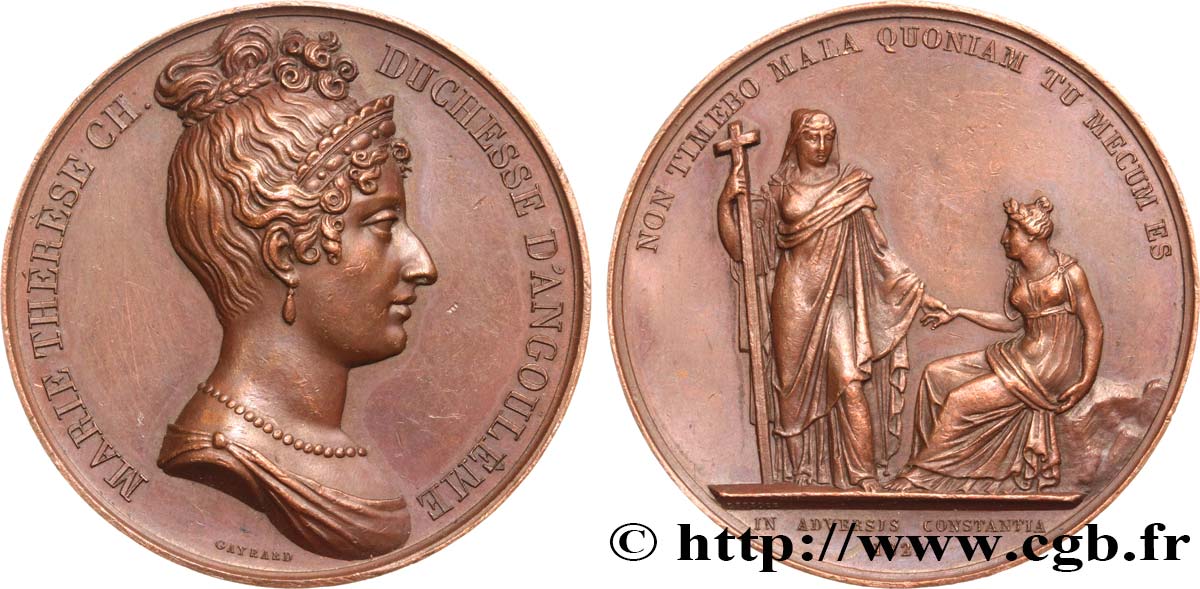Usted debe firmar y ser un comprador aprobado para pujar, Inicia sesión para pujar. Las cuentas están sujetas a la aprobación y el proceso de aprobación se alcanzan dentro de las 48 horas. No espere hasta el día en una venta se cierra el registro.Al hacer una oferta en este artículo usted está firmando un contrato jurídicamente vinculante para comprar este artículo y haga clic en «oferta» constituye una aceptación de los términos de uso de live auctions de cgb.fr.
La subasta debe ser colocado en euros enteros cantidades venta only.The se cerrará en el momento en la descripción del artículo, no se ejecutarán las ofertas recibidas en el sitio después de la hora de cierre. Veces Transmition pueden variar y las ofertas pueden ser rechazadas si espera a los últimos segundos. Para más información envie el FAQ Live auction.
Las ofertas ganadoras estarán sometidas a un 18% IVA incluido por gastos de participación a la venta.
Las ofertas ganadoras estarán sometidas a un 18% IVA incluido por gastos de participación a la venta.
| Valoración : | 150 € |
| Precio : | 75 € |
| Oferta más alta : | 75 € |
| Fecha de fin de la venta : | 29 enero 2019 17:36:32 |
| participantes : | 1 participante |
Tipo : Médaille, Marie-Thérèse Charlotte de France
Fecha: 1821
Metal: bronce
Diámetro: 40,5 mm
Eje de acuñación: 12 h.
Acuñador GAYRARD Raymond (1777-1858)
Peso: 38,1 g.
Canto: lisse
Cuño: sans poinçon
Comentarios sobre el estado de conservación:
Patine hétérogène. Présence de coups et rayures suite à un léger nettoyage dans les champs
Anverso
Titulatura del anverso: MARIE THÉRÈSE CH. - DUCHESSE D’ANGOULÊME.
Descripción del anverso: Buste à droite de la duchesse d’Angoulême. Signé : GAYRARD.
Reverso
Titulatura del reverso: NON TIMEBO MALA QUONIAM TU MECUM ES // À L’EXERGUE : IN ADVERSIS CONSTANTIA / 1821..
Descripción del reverso: La Religion tenant la main d'une femme assise. Signé sur la plinthe : LEVEQUE.
Comentario
Marie-Thérèse Charlotte de France, surnommée « Madame Royale », née le 19 décembre 1778 à Versailles et morte le 19 octobre 1851 à Frohsdorf en Autriche, est le premier enfant de Louis XVI et Marie-Antoinette. Après une enfance passée à la Cour, elle est la seule des enfants royaux à survivre à la Révolution française. Condamnée par les insurgés puis réduite à l’exil, Marie-Thérèse Charlotte, devenue Dauphine de France en 1824, et qui aurait pu devenir reine de France lors des journées de 1830, reste attachée à la monarchie jusqu’à la fin de sa vie. C'est en exil sous le titre de courtoisie de “comtesse de Marnes” qu'elle décède le 19 octobre 1851 à Frohsdorf en Autriche.
En tant qu'unique rescapée de la famille royale stricto sensu, la timide princesse devint alors bien malgré elle, une véritable « célébrité ». Pour tous c'est « l'Orpheline du Temple », nom qui ne la quitte plus. Ses admirateurs vont ainsi jusqu’à louer un appartement en face du Temple : on la scrute pour rendre compte de ses faits et gestes quotidiens et mieux la réinventer. Plus largement, on en fait l’héroïne de chansons, de poèmes et de récits au goût du jour, qui ont sa souffrance et son histoire, et non son rang, pour principal ressort. Elle devient alors le meilleur agent de propagande des royalistes, instrument politique, certes, mais un instrument révéré et adoré de ses partisans et ce durant toute sa vie.
Marie-Thérèse Charlotte of France, nicknamed \\\"Madame Royale\\\", born on December 19, 1778 in Versailles and died on October 19, 1851 in Frohsdorf in Austria, is the first child of Louis XVI and Marie-Antoinette. After a childhood spent at Court, she was the only royal child to survive the French Revolution.. Condemned by the insurgents and then reduced to exile, Marie-Thérèse Charlotte, who became Dauphine of France in 1824, and who could have become Queen of France during the events of 1830, remained attached to the monarchy until the end of her life.. It was in exile under the courtesy title of “Countess of Marnes” that she died on October 19, 1851 in Frohsdorf, Austria..
As the only survivor of the royal family in the strict sense, the shy princess then became, in spite of herself, a real \\\"celebrity\\\".. For everyone she is \\\"the Orphan of the Temple\\\", a name that never leaves her.. Her admirers even go so far as to rent an apartment opposite the Temple: she is scrutinized to report on her daily actions and better reinvent her.. More broadly, she is made the heroine of songs, poems and stories in the style of the day, which have her suffering and her story, and not her rank, as their main driving force.. She then became the best propaganda agent of the royalists, a political instrument, certainly, but an instrument revered and adored by her supporters throughout her life.
En tant qu'unique rescapée de la famille royale stricto sensu, la timide princesse devint alors bien malgré elle, une véritable « célébrité ». Pour tous c'est « l'Orpheline du Temple », nom qui ne la quitte plus. Ses admirateurs vont ainsi jusqu’à louer un appartement en face du Temple : on la scrute pour rendre compte de ses faits et gestes quotidiens et mieux la réinventer. Plus largement, on en fait l’héroïne de chansons, de poèmes et de récits au goût du jour, qui ont sa souffrance et son histoire, et non son rang, pour principal ressort. Elle devient alors le meilleur agent de propagande des royalistes, instrument politique, certes, mais un instrument révéré et adoré de ses partisans et ce durant toute sa vie.
Marie-Thérèse Charlotte of France, nicknamed \\\"Madame Royale\\\", born on December 19, 1778 in Versailles and died on October 19, 1851 in Frohsdorf in Austria, is the first child of Louis XVI and Marie-Antoinette. After a childhood spent at Court, she was the only royal child to survive the French Revolution.. Condemned by the insurgents and then reduced to exile, Marie-Thérèse Charlotte, who became Dauphine of France in 1824, and who could have become Queen of France during the events of 1830, remained attached to the monarchy until the end of her life.. It was in exile under the courtesy title of “Countess of Marnes” that she died on October 19, 1851 in Frohsdorf, Austria..
As the only survivor of the royal family in the strict sense, the shy princess then became, in spite of herself, a real \\\"celebrity\\\".. For everyone she is \\\"the Orphan of the Temple\\\", a name that never leaves her.. Her admirers even go so far as to rent an apartment opposite the Temple: she is scrutinized to report on her daily actions and better reinvent her.. More broadly, she is made the heroine of songs, poems and stories in the style of the day, which have her suffering and her story, and not her rank, as their main driving force.. She then became the best propaganda agent of the royalists, a political instrument, certainly, but an instrument revered and adored by her supporters throughout her life.








 Informar de un error
Informar de un error Imprimir la página
Imprimir la página Comparte mi selección
Comparte mi selección Haz una pregunta
Haz una pregunta Consignar / vender
Consignar / vender
 Descriptivo
Descriptivo















